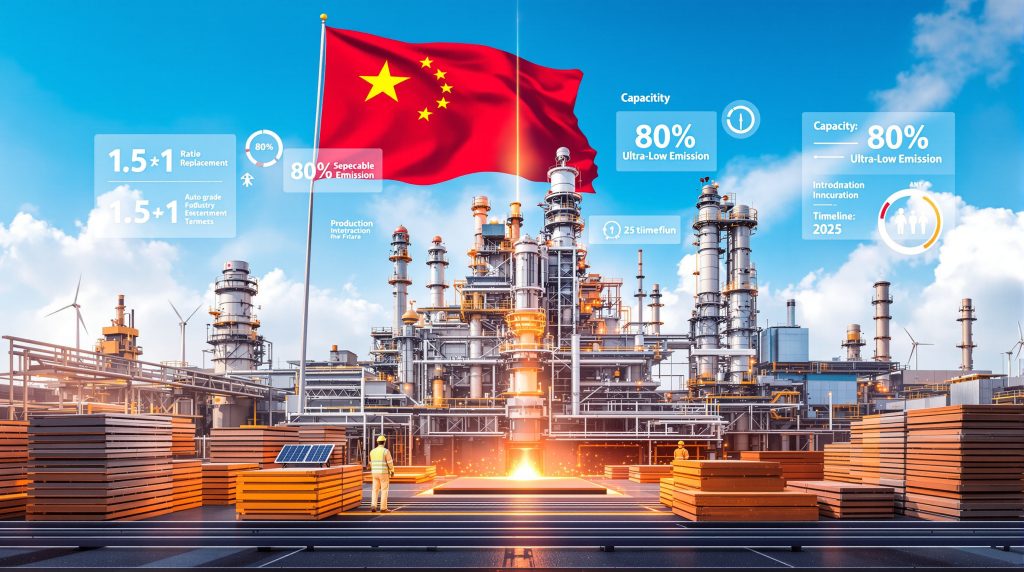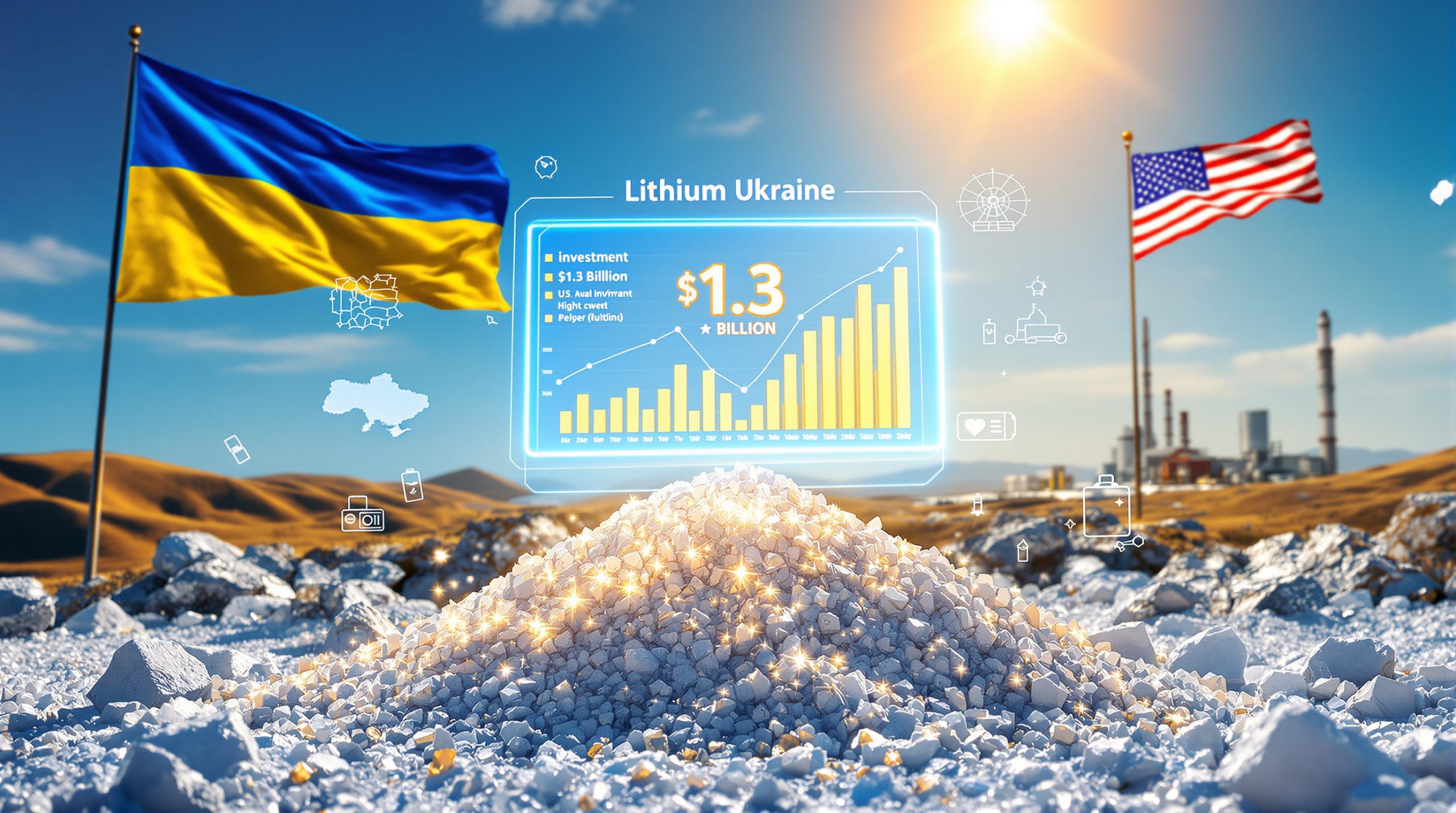China's steel industry transformation represents a fundamental shift from previous supply-side interventions toward a comprehensive quality enhancement framework. Rather than implementing immediate production cutbacks, Beijing has adopted market-driven mechanisms combined with strategic capacity controls to reshape the sector over multiple years. This strategic pivot reflects broader industry evolution trends that prioritise technological advancement over traditional volume-based competition.
The government's latest five-year economic blueprint emphasizes innovation-driven growth while establishing graduated capacity controls through administrative oversight. This measured approach reflects lessons learned from previous heavy-handed interventions that disrupted supply chains and created market volatility.
Core Elements of the Revival Framework
The October 2024 industry ministry proposal established several key mechanisms that form the backbone of the revival strategy:
- Enhanced capacity elimination ratios: New facility construction requires eliminating 1.5 times existing operational capacity
- Innovation prioritisation: Government support channels toward high-end steel products over commodity materials
- Environmental compliance acceleration: 80% of production capacity targeting ultra-low emission standards by end-2025
- Market-responsive adjustments: Production decisions driven by demand patterns and profit margins rather than mandated quotas
The strategy deliberately avoids the disruption caused by previous campaigns while creating long-term structural incentives for technological advancement. This approach allows mills to maintain operational stability while gradually upgrading capabilities and environmental performance.
Implementation Through Gradual Tightening
Beijing's commitment to gradual implementation represents a significant departure from historical interventions in the steel sector. The policy framework establishes what Bloomberg News described as a "gradual tightening of the screws on steelmakers that would play out over years rather than months."
This extended timeline allows companies to plan capital investments, secure financing for upgrades, and maintain employment levels during transitions. The approach also provides flexibility for regional variations in implementation based on local economic conditions and industrial priorities.
How Will Capacity Controls Reshape Steel Production?
The new capacity control framework introduces sophisticated mechanisms that balance production growth with structural optimisation. Rather than imposing blanket shutdown orders, the system creates economic incentives that favour efficiency and technological advancement.
Implementation Timeline and Mechanisms
The capacity control system operates through several interconnected components:
- Mandatory elimination ratios: All new capacity additions require eliminating 1.5 times existing operations
- Preferential upgrade terms: Facility modernisation projects receive more favourable elimination requirements
- Regional differentiation: Complete expansion bans implemented in key manufacturing hubs
- Phased enforcement: Multi-year rollout schedule allows industry adaptation
This structure ensures that capacity expansion contributes to overall sector improvement rather than simply adding to existing overcapacity problems. The 1.5-to-1 elimination ratio guarantees net capacity reductions while encouraging technological modernisation.
Regional Variations and Restrictions
Implementation varies significantly across China's industrial regions. Furthermore, these policies intersect with ongoing industry consolidation trends that reshape competitive dynamics across key manufacturing hubs.
These regional restrictions serve multiple objectives. They concentrate new investment in areas with better environmental compliance capabilities while preventing further industrial concentration in already oversupplied regions. The approach also supports government efforts to rebalance regional economic development.
Key Insight: The capacity control framework creates powerful incentives for consolidation and technological upgrading while avoiding the economic disruption of immediate shutdowns.
The measured implementation approach addresses previous criticisms of heavy-handed government intervention while maintaining policy effectiveness. By allowing market forces to operate within structured parameters, the system encourages voluntary compliance and strategic planning by industry participants.
Why Are High-End Steel Products Central to Recovery Plans?
Beijing's strategic emphasis on specialty steel production reflects broader economic transformation priorities toward value-added manufacturing and technological sophistication. This focus represents a deliberate departure from commodity steel production that has characterised much of China's industrial expansion.
Product Category Priorities
Government support mechanisms clearly distinguish between different steel product categories:
| Steel Product Type | Government Support Level | Market Trajectory | Strategic Importance |
|---|---|---|---|
| Construction rebar | Limited incentives | Declining domestic demand | Low priority |
| Specialty alloys | High priority funding | Strong growth potential | Critical for advanced manufacturing |
| Automotive steel | Maximum support | Innovation-driven expansion | Essential for EV transition |
| Green steel products | Premium incentives | Environmental compliance focus | Central to carbon goals |
This differentiated approach channels resources toward products that support China's broader industrial upgrading objectives while reducing dependence on construction-driven demand cycles.
Market Reality vs. Policy Objectives
Current export patterns reveal significant gaps between government priorities and market reality. Florence Sun, an analyst at Macquarie Group Ltd., noted that "if you look at what China's been exporting this year, the growth has come from semi-finished steel like billets."
This disconnect indicates that despite policy emphasis on finished high-end products, Chinese steel exports continue to rely heavily on lower-value intermediate materials. The gap represents both a challenge and an opportunity for industry transformation.
Competitive Advantages for Leading Producers
Top-tier steel manufacturers stand to benefit significantly from the quality-focused revival strategy. Tomas Gutierrez, an analyst at Kallanish Commodities Ltd., emphasised that "the future of the industry is looking brighter for the top echelon of producers" who can capitalise on government support for innovation and quality improvements.
Leading producers gain advantages through:
- Enhanced research and development funding for specialty product development
- Preferential regulatory treatment for facility upgrade projects
- Access to green financing mechanisms supporting environmental compliance
- Export promotion support for finished steel products
These advantages create competitive differentiation that rewards technological capability and production sophistication over pure volume-based competition.
What Role Do Environmental Standards Play in Industry Transformation?
Environmental compliance requirements drive fundamental changes in steel manufacturing processes, with ultra-low emission standards and clean technology adoption becoming strategic imperatives rather than regulatory burdens. These developments align with broader decarbonisation benefits that extend beyond regulatory compliance to operational excellence.
Environmental Compliance Framework
The 80% ultra-low emission compliance target by end-2025 represents an acceleration of previous environmental goals. This ambitious timeline requires substantial capital investment and technological advancement across the majority of China's steel production capacity.
Key compliance elements include:
- Ultra-low emission standards: Strict limits on particulate matter, sulfur dioxide, and nitrogen oxide emissions
- Electric arc furnace expansion: Transition toward lower-carbon production methods
- Hydrogen metallurgy development: Investment in next-generation clean production technologies
- Comprehensive energy efficiency: Operational optimisation across all production processes
Technology Transition Economics
The environmental compliance requirements create significant capital investment demands while offering long-term operational advantages. Electric arc furnace technology reduces direct emissions compared to traditional blast furnaces while providing greater operational flexibility.
Hydrogen-based metallurgy represents the next frontier in clean steel production, though commercial viability depends on hydrogen supply infrastructure development and cost competitiveness. Early investments in these technologies position companies for future regulatory requirements and market opportunities.
Implementation Challenges and Opportunities
Environmental compliance creates both costs and competitive advantages. Companies that successfully implement ultra-low emission technologies gain operational efficiency benefits while meeting regulatory requirements. Those that lag face increasing regulatory pressure and potential capacity restrictions.
The transition also supports broader industrial policy objectives by encouraging consolidation toward larger, more technologically advanced producers capable of making substantial environmental investments.
How Are Market Dynamics Influencing Production Decisions?
Steel production decisions increasingly reflect market fundamentals rather than government directives, creating responsive supply management aligned with demand patterns and profitability considerations. However, these dynamics remain sensitive to iron ore price trends that significantly impact production economics.
Current Market Conditions
Mills now "adjust output based on demand — not great, at least domestically — and margins — surprisingly good due to lower raw material costs." This market-driven approach represents a significant shift from previous supply management strategies.
Key market indicators include:
- Raw material costs: Favourable input pricing supporting mill margins
- Domestic demand: Weakened by prolonged property sector challenges
- Export opportunities: Strong international demand offsetting domestic weakness
- Production forecast: Annual output likely below 1 billion tons for first time in six years
Demand-Side Challenges and Opportunities
China's property sector downturn continues to suppress domestic steel consumption, particularly for construction-related products. This fundamental demand weakness creates pressure for alternative consumption sources and export market development.
Government infrastructure initiatives provide some demand support, though these projects cannot fully offset property sector weakness. The emphasis on major construction projects in the five-year plan represents an attempt to stabilise domestic steel consumption during the property market adjustment period.
Margin Dynamics and Production Optimisation
Surprisingly favourable margins due to lower raw material costs have supported production levels despite weak domestic demand. This margin environment enables mills to maintain operations while investing in capacity upgrades and environmental compliance measures.
The combination of reduced input costs and selective demand growth in export markets creates conditions for profitable operation even as total production volumes decline. This dynamic supports the government's preference for market-driven production adjustments over mandated cuts.
What Are the Export Market Implications?
Chinese steel exports present complex opportunities and challenges, with strong volumes offsetting concerns about product composition and international trade tensions. These developments occur amid broader trade war impact considerations that influence global market dynamics.
Export Volume and Composition Analysis
Goldman Sachs Group Inc. forecasts an 8% decline in Chinese steel exports for 2025, though this would still represent "the second-highest net volume on record." This projection indicates continued global market dominance despite domestic policy shifts.
Export composition reveals important trends:
- Semi-finished product dominance: Billets and intermediate materials driving export growth
- Limited high-end product exports: Gap between policy priorities and market reality
- Volume versus value trade-offs: Strong export volumes but limited value-added content
- Geographic diversification: Expanding market reach despite protectionist pressures
International Trade Considerations
Rising global protectionism creates challenges for sustained export growth. Furthermore, China aims to revive steelmaking through domestic improvements whilst navigating complex international trade relationships.
Various countries have implemented tariffs and trade restrictions targeting Chinese steel exports, limiting market access and pricing flexibility. These trade tensions reinforce the strategic importance of upgrading export product mix toward higher-value finished goods that face fewer trade restrictions and generate superior margins.
Market Development Strategies
Chinese steel producers are adapting export strategies to navigate changing international conditions:
- Product sophistication: Gradual transition toward finished steel products
- Geographic diversification: Developing markets in regions with fewer trade restrictions
- Value-added processing: Establishing downstream manufacturing capabilities
- Joint venture partnerships: Collaborating with international companies to access restricted markets
Trade Reality: Despite projected declines, Chinese steel exports will remain at historically high levels, highlighting continued global market influence and competitive advantages.
Which Steel Producers Will Benefit Most from Revival Policies?
The revival strategy creates clear winners among steel producers, with technological capability, financial resources, and strategic positioning determining competitive advantages.
Competitive Differentiation Factors
Top-tier manufacturers with specific capabilities stand to benefit significantly:
- Advanced production systems: Modern facilities capable of meeting ultra-low emission standards
- Financial capacity: Resources to fund modernisation and environmental compliance projects
- Product specialisation expertise: Capability to manufacture high-value steel products
- Innovation capabilities: Research and development capacity for next-generation production technologies
Industry Consolidation Opportunities
The revival policies encourage consolidation toward larger, more capable producers through several mechanisms:
- Capacity transfer facilitation: Regulatory support for acquiring and consolidating smaller operations
- Technology sharing incentives: Government support for knowledge transfer and joint development projects
- Financial advantages: Better access to capital and government funding programmes
- Regional hub development: Concentration of production in technologically advanced facilities
Strategic Positioning for Market Leadership
Leading producers can leverage policy advantages to strengthen market positions through operational excellence, technological advancement, and strategic partnerships. The combination of capacity controls and quality incentives creates barriers to entry for smaller competitors while rewarding scale and sophistication.
Companies that successfully navigate the transition will emerge with stronger competitive positions, better environmental compliance, and enhanced product portfolios aligned with long-term market trends.
How Do Infrastructure Projects Support Steel Demand Recovery?
Government infrastructure initiatives provide crucial demand stability during the property sector adjustment period, offering strategic market support for domestic steel consumption.
Project Categories and Steel Requirements
Infrastructure development programmes span multiple sectors with varying steel intensity requirements:
| Infrastructure Category | Steel Consumption Intensity | Implementation Timeline | Market Impact |
|---|---|---|---|
| Transportation networks | High-grade structural steel demand | Multi-year development programmes | Sustained demand support |
| Energy infrastructure | Specialised alloy requirements | Immediate project launches | Premium product demand |
| Industrial park development | Diverse steel product mix | Regional variation in timing | Broad-based consumption |
| Urban development projects | Construction material focus | Dependent on local planning | Variable market impact |
Strategic Demand Management
Infrastructure projects serve multiple policy objectives beyond steel demand support. They provide economic stimulus, employment generation, and long-term productivity improvements while creating markets for domestic steel production.
The timing and scale of infrastructure announcements demonstrate government commitment to maintaining steel demand stability during the industry transition period. This demand support enables producers to invest in capacity upgrades and environmental compliance without facing immediate market pressure.
Regional Development and Steel Consumption
Infrastructure projects create regionally distributed demand that supports steel mills across different provinces and reduces dependence on concentrated industrial centres. This geographic distribution also supports employment stability and regional economic development objectives.
The emphasis on transportation and energy infrastructure particularly benefits specialty steel producers capable of meeting technical specifications for advanced infrastructure applications.
What Challenges Remain for Long-Term Industry Health?
Despite revival efforts, structural challenges continue to pressure industry profitability and require sustained policy support and market adaptation.
Persistent Structural Issues
Several fundamental challenges limit revival strategy effectiveness:
- Historical overcapacity legacy: Excess production capacity accumulated during previous expansion periods
- Property sector impact: Continued weakness in construction steel demand
- International competition: Rising global trade restrictions limiting export opportunities
- Technology transition costs: Substantial capital requirements for environmental compliance and modernisation
Demand-Side Vulnerabilities
Domestic demand weakness creates ongoing pressure on production levels and pricing. The property sector adjustment appears likely to continue, limiting construction steel consumption for an extended period.
Export dependence creates vulnerability to international trade tensions and global economic conditions. While current export volumes remain strong, sustainability depends on maintaining market access and competitive positioning.
Success Metrics and Monitoring
Effective policy implementation requires tracking multiple performance indicators:
- Production efficiency improvements: Capacity utilisation and operational performance metrics
- Environmental compliance rates: Progress toward ultra-low emission targets
- Export product quality enhancement: Shift toward higher-value finished products
- Domestic demand stabilisation: Recovery in construction and infrastructure steel consumption
Long-Term Sustainability Requirements
Achieving sustainable industry health requires addressing fundamental supply-demand imbalances through continued capacity optimisation, demand development, and international market integration. The success of current policies will determine whether the steel sector can achieve profitable operation without ongoing government support.
Conclusion: Balancing Growth and Sustainability in Steel Revival
China aims to revive steelmaking without ordering cuts to supply through a sophisticated strategy that prioritises quality enhancement over quantity reduction. This measured approach represents a significant evolution in industrial policy, emphasising market mechanisms and technological advancement rather than administrative mandates.
The revival framework creates clear incentives for industry consolidation toward technologically advanced, environmentally compliant producers while maintaining production stability during the transition period. Success depends on sustained implementation of capacity controls, continued support for innovation and environmental compliance, and recovery in domestic demand beyond current export-dependent strategies.
Leading steel producers with technological capabilities and financial resources stand to benefit significantly from this policy environment, while smaller, less sophisticated operations face increasing competitive pressure. The emphasis on high-end steel products aligns with broader economic transformation objectives while addressing international trade concerns about commodity exports.
However, achieving long-term sector health requires addressing fundamental overcapacity issues inherited from previous expansion periods and rebuilding domestic demand stability. The property sector adjustment continues to suppress construction steel consumption, making infrastructure investment and export market development crucial for maintaining production levels.
The measured approach offers advantages over previous heavy-handed interventions by providing industry stability and planning certainty. Yet the ultimate success of China's steel revival strategy will depend on market recovery, international trade conditions, and the industry's ability to successfully upgrade technological capabilities and environmental performance within the established policy framework.
Disclaimer: This analysis is based on publicly available information and expert opinions as of November 2025. Steel industry conditions, government policies, and market dynamics may change rapidly, affecting the accuracy of projections and strategic assessments presented in this article.
Ready to Capitalise on Commodity Market Transformations?
Discovery Alert's proprietary Discovery IQ model delivers real-time alerts on significant ASX mineral discoveries, instantly empowering subscribers to identify actionable opportunities ahead of the broader market. Begin your 30-day free trial today and secure your market-leading advantage whilst major industrial shifts create new investment opportunities.




